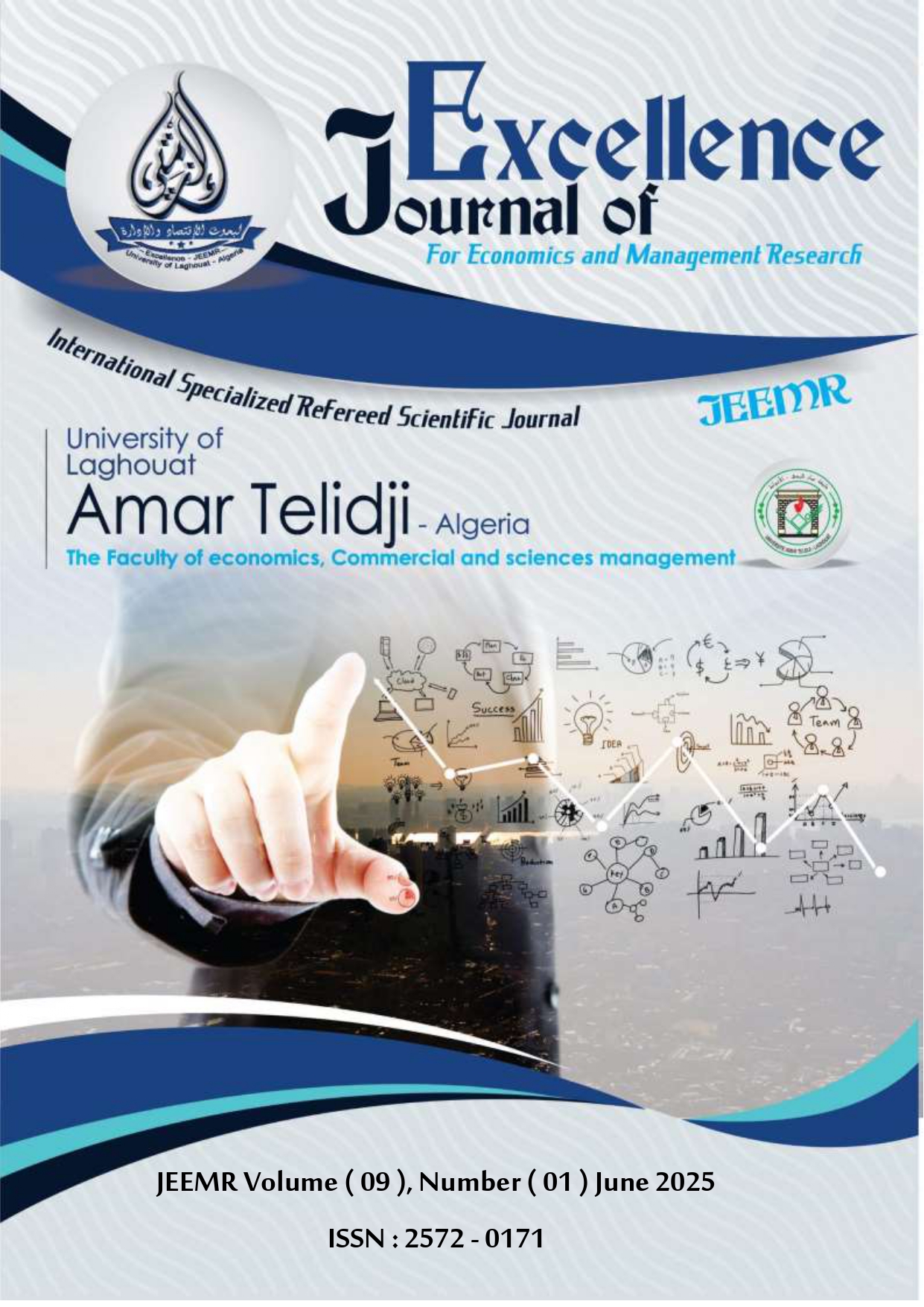A Comparative Analysis of Growth Dynamics Among BRICS: Structural Challenges and Economic Opportunities
Abstract
The BRICS bloc, comprising Brazil, Russia, India, China, and South Africa, represents a significant economic force in the global economy. Through a comparative analytical approach, this study examines growth dynamics, structural challenges, and economic opportunities within BRICS nations, focusing on their divergent economic trajectories and collective ability to address global economic challenges. The study highlights the role of technological innovation, infrastructure investment, human capital development, and trade agreements in shaping the economic performance of BRICS countries.
While China and India have demonstrated strong growth through state-led policies and economic liberalization, Brazil, Russia, and South Africa face persistent challenges such as political instability and resource dependency. The study concludes that addressing structural disparities, enhancing intra-BRICS trade, and strengthening institutional coordination are crucial for maintaining the bloc's cohesion and increasing its global influence. Without these reforms, BRICS risks remaining a symbolic alliance with limited economic impact
References
Abramova, A., & Garanina, a. O. (2018). Russian MNEs under sanctions: Challenges for upgrading in GVCs (cases of energy and IT industries). Journal of East-West Business, 371-391.
Alston, L. J., & al., e. (2006). Political institutions, policymaking processes and policy outcomes in Brazil.
Arabage, A. C., & Souza, a. A. (2019). Wage dynamics and inequality in the Brazilian formal labor market. EconomiA, 20(3), 153-190.
Araujo, J. P., & Rodrigues, a. M. (2020). Evidence on search costs under hyperinflation in Brazil: The effect of Plano Real. Brazilian Review of Econometrics , 40.1, 75-110.
Baer, W. (2001). The Brazilian economy: Growth and development. Bloomsbury Publishing USA.
Bai, C.-E., & Qian, a. Y. (2010). Infrastructure development in China: the cases of electricity, highways, and railways. Journal of Comparative Economics, 38(1), 34-51.
Balassa, B. (1961). The Theory of Economic Integration. London: Routledge.
Barro, R. J., & Sala-i-Martin, a. X. (1995). Economic Growth. MIT Press.
Bernstein, A. (2023). South Africa’s Anti-Growth Strategy: How poor policy and bad governance are wrecking growth. The Centre for Development and Enterprise. CDE’s Growth Agenda series of publications.
Bhagwati, J. N. (1992). Regionalism and multilateralism: an overview. 22(1), 22-51.
Bhalla, A. S. (2016). Regional blocs: building blocks or stumbling blocks? Springer.
BP. (2024). bp Energy Outlook. British Petroleum.
Brynjolfsson, E., & McAfee, a. A. (2014). The second machine age: Work, progress, and prosperity in a time of brilliant technologies. WW Norton & company.
Burger, R. P., & Fintel, a. D. (2014). Rising unemployment in a growing economy: A business cycle, generational and life cycle perspective of post-transition South Africa's labour market. Studies in Economics and Econometrics, 38(1), 35-64.
César, C., & Servén, a. L. (2010). Infrastructure and economic development in Sub-Saharan Africa. Journal of African Economies , 13-87.
Chand, K., Tiwari, R., & Phuyal, a. M. (2017). Economic growth and unemployment: An empirical study of Indian economy. Pragati: Journal of Indian Economy,130-137.
David, R. (2001). Economic change, governance and natural resource wealth: the political economy of change in southern Africa. Earthscan.
De Grauwe, P. (2020). Economics of monetary union. Oxford university press.
Du, Y., & Yang, a. C. (2015). Demographic transition and labour market changes: Implications for economic development in China. China's Economy: A Collection of Surveys, 25-44.
Duggan, N., & al, e. (2022). The BRICS, global governance, and challenges for South–South cooperation in a post-Western world. International Political Science Review, 43, 469-480.
Dunning, J. H., & Lundan, S. M. (2008). Multinational Enterprises and the Global Economy. Edward Elgar Publishing.
Duval, R., & Shibata, a. I. (2021). Labor market reform options to boost employment in South Africa. IMF working paper.
Esanov, A., Merkl, C., & Souza, a. L. (2005). Monetary policy rules for Russia. Journal of Comparative Economics, 33.3, 484-499.
FAO. (2024). The State of Food and Agriculture. Food and Agriculture Organization of the United Nations.
Frankel, J. A., & Romer, a. D. (1999). Does trade cause growth? American Economic Review, 89(3), 379-399.
Gaĭdar, E. T. (1999). Days of Defeat and Victory . Jackson School Publications in International Studies: University of Washington Press.
Gimpelson, V., & Kapeliushnikov, a. R. (2011). Labor market adjustment: is Russia different?
Government of India. (2014). Make in India. Récupéré sur https://www.makeinindia.com
Haas, E. B. (1958). The Uniting of Europe: Political, Social, and Economic Forces, 1950-1957. Stanford University Press.
Hamilton, J. D. (2009). Causes and Consequences of the Oil Shock of 2007-08. National Bureau of Economic Research.
Hanushek, E. A., & Woessmann, a. L. (2018). The knowledge capital of nations: Education and the economics of growth. MIT Press.
IMF. (2024). World Economic Outlook. International Monetary Fund.
Käkönen, J. (2014). BRICS as a new power in international relations? . Geopolitics, History, and International Relations, 6.2, 85-104.
Kotwal, A., Ramaswami, B., & Wadhwa, a. W. (2011). Economic liberalization and Indian economic growth: What's the evidence? Journal of Economic Literature , 49.4, 1152-1199.
Krugman, P. (1991). Increasing returns and economic geography. Journal of political economy, 99.3, 483-499.
Lagutina, M. L. (2019). BRICS in a world of regions. Third World Thematics: A TWQ Journal, 4(6), 442-458.
Lee, B. T., & Sims, a. J. (2024). Legitimacy through Diversity: China's Leadership in the BRICS+ Expansion for Global Balance. Fudan Journal of the Humanities and Social Sciences, 1-38.
Lovell, P. A. (2000). Race, gender and regional labor market inequalities in Brazil. Review of social economy, 58(3), 277-293.
Mattli, W. (1999). The logic of regional integration: Europe and beyond. Cambridge University Press.
Mundell, R. A. (1961). A theory of optimum currency areas. The American economic review, 51.4, 657-665.
Naughton, B. (2007). The Chinese economy: Transitions and growth. MIT press.
NDB. (2024). Annual Report. New Development Bank.
O'Neill, J. (2001). Building better global economic BRICs. Goldman Sachs, 66, 1-16.
Oxenstierna, S., & Olsson, a. P. (2015). The economic sanctions against Russia." Impact and Prospect of Success. FOI .
Patnaik, I., & and Pundit, M. (2019). Financial shocks and exchange market pressure.
Punetha, A. (2025). Geopolitical Alignment and Internal Differences in the BRICS . India Foundation.
Sachs, J. D., & Warner, A. M. (2001). The curse of natural resources. European Economic Review, 827-838.
Schiff, M. W., & Winters, a. L. (2003). Regional integration and development. World Bank Publications.
Shetty, P. (2019). Digital india initiative and E-governance: Issues and challenges.418-425.
Suresh, S., & Dube, a. M. (2014). BRICS andThe World Order: A Beginner’s Guide [en ligne]. . Récupéré sur https://papers.ssrn.com/sol3/papers.cfm?abstract_id=2443652
Teo, H. C., & al., e. (2019). Environmental impacts of infrastructure development under the belt and road initiative. Environments, 72. doi: https://doi.org/10.3390/environments6060072
UNCTAD. (2024). World Investment Report . United Nations Conference on Trade and Development.
Van Der, P. (2011). Natural Resources: Curse or Blessing ? Journal of. Economic Literature, 49(2), 366-420.
Viner, J. (1951). The Customs union issue. Revue économique, 2(6).
Welfens, P. J. (2023). Russia's invasion of Ukraine: Economic challenges, embargo issues and a new global economic order. Springer Nature.
WIPO. (2024). World Intellectual Property Indicators. World Intellectual Property Organization.
World Bank. (2024). World Development Indicators. Récupéré sur https://databank.worldbank.org
Yu, L., Du, J., & Dang, a. H. (2020). Special issue on FDI and integration of Chinese economy. China Economic Review 61 , 101460.
Zenglein, M. J., & Holzmann, a. A. (2019). Evolving made in China 2025. MERICS papers on China, 78.
Zhongxiu, Z., & Qingxin, a. L. (2020). Promoting BRICS cooperation for economic growth and development.








